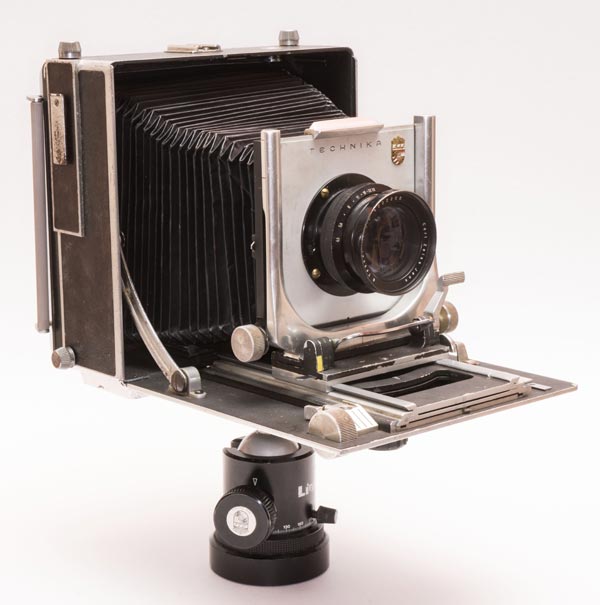
This Linhof allows formats 5 x 7″ and 13 x 18 cm, although slightly different (5 x 7″ corresponds to 127.0 x 177.8 mm) are usually possible in the same camera as they only depend on the film holder used. That is, externally the film holder of the two formats are the same and only internally they adjust to one or another size of film or plate. This is a size that I find very convenient these days for the amateur photographer, as it allows for contact-printed photographs that are already a very nice size to look at in your hands or in an album.
Being able to print by contact greatly simplify the lab. All necessary equipment can be stored in a small cabinet and assembled 5 minutes before starting a film developing or copy printing session. In addition to the contact printer, which can be small, just the size needed, only 3 trays, some 250 ml beakers and some jars to store the solutions are needed. A safe light and a cell phone as a timer complete the necessary basics. It’s much easier and costs much less than having a dedicated lab, with an enlarger, to take photos from 35mm film. The camera doesn’t have to be a Linhof either, many wooden view cameras can be found for a fraction of the price. I’m not going to extend myself in defense of this format, but I leave this point here for those who think about doing analog photography to meditate and draw their conclusions.

Linhof was quite proud that their line of Super Technikas offered, even in large format, a focusing coupled rangefinder as we can read above. It really was an engineering feat. Every lens was calibrated. with a part called cam, supplied and numbered with the same serial number as the lens, and with it the photographer could focus by a rangefinder on the camera body. Even more amazing to contemporary eyes is that all this was done manually starting with a ruler and compass, no CAD or CNC machining. Below, a photo from a Linhof brochure shows the design department.

Despite that, my Technica doesn’t have this rangefinder and I think it’s great. The camera is already heavy and I can’t imagine taking hand held pictures with it. Owning the rangefinder would make it even heavier to have a feature I don’t see much use for. A camera with ground glass is usually attractive by focusing and framing precisely with movements of the lens board and camera back. Why throw that away and still have to think about minimizing parallax problems? For like-minded people, fortunately Linhof conceded to offer models without rangefinder and this is the case with my camera.
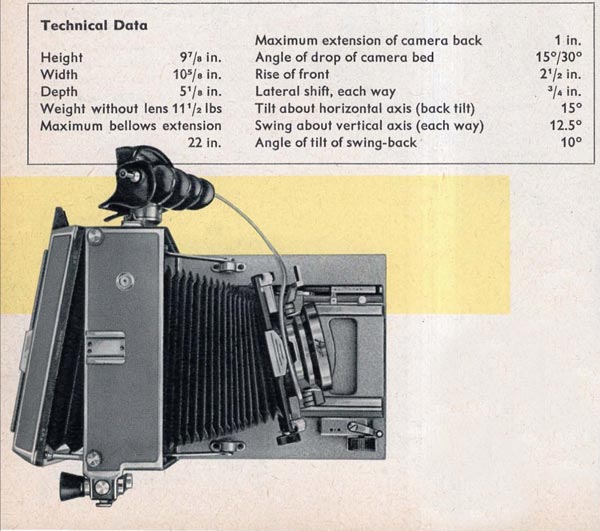
As a drop-bed it has more limited movement than a monorail camera. But they are reasonable as read in the illustration above. The bellows extends ~56 cm (22″) and this allows for very long lenses for the format.
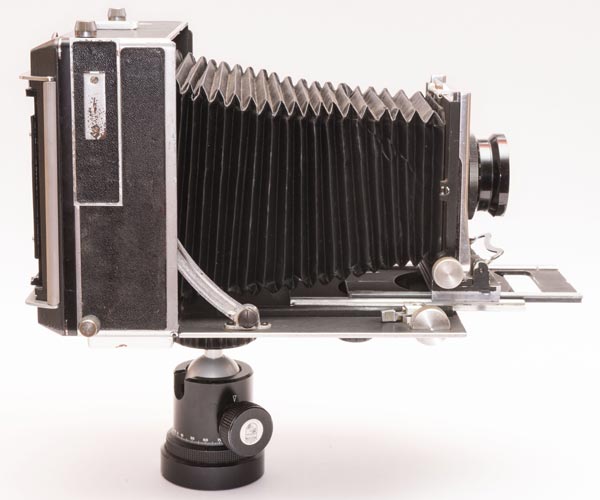
Even with all this extension possibility, which is done via a triple platform, the camera remains satisfactorily rigid for normal use. Of course, if you shake the lens board when it’s advanced all the way, it will shake, but just don’t do that while exposing your photo.
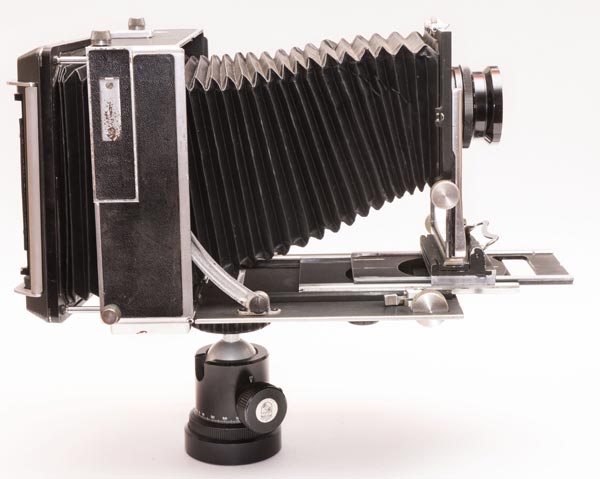
Front raise movement is very wide at 2 ½” (63 mm). Rear angulations are more modest due to Linhof’s traditional four-axis locking system. Each rear corner can be retracted up to an inch, 25.4 mm.

The front can slide sideways, 3/4″ (19 mm), and tilt backward 10° or rotate on a vertical axis 12.5°.

I experimented with adapting a fresnel that I took from an overhead projector into the 13x18cm ground glass. Surprisingly it works very well and ended up being definitive. It’s coarse but helps a lot with shorter lenses and doesn’t impair focusing.

Very practical to use at home is this adapter for 4×5″. The movements and extensions that are sometimes a little short on the Super Technika V 4×5″ gain some more room in this larger camera. Bigger lenses are also easier to use, the ones that would be difficult to fit in an original 4×5″. The rotating back is practical but I don’t even remember ever using an angle that wasn’t orthogonal. I usually start by leveling the tripod and then I always go for portrait or landscape.
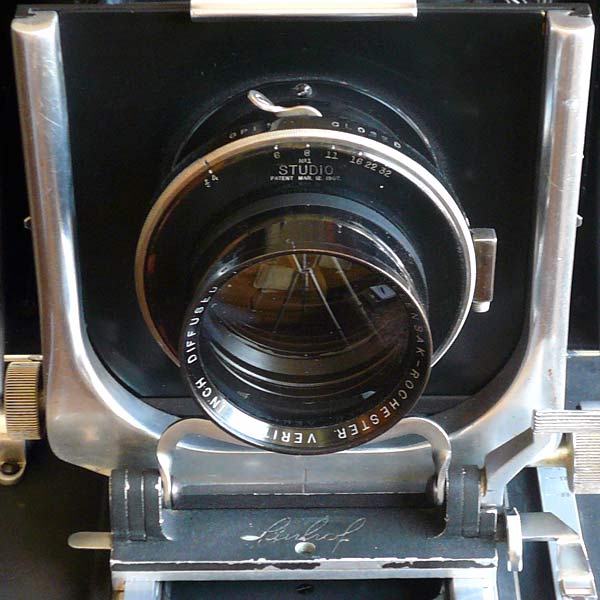
One very good thing about the Linhof 5×7″ (13 x 18 cm) is that the lens board is simply a rectangle ~3mm thick. That way you can make as many lens boards as you need at home at a very low cost. As the range of lenses that such a camera allows is very large, I kind of standardized on this lens board and adapted most of the lenses for use on this camera and other cameras to use the same lens board. For example, this Thornton Pickard 18 x 24 cm has a Protar 300mm that I can also use in this Linhof.
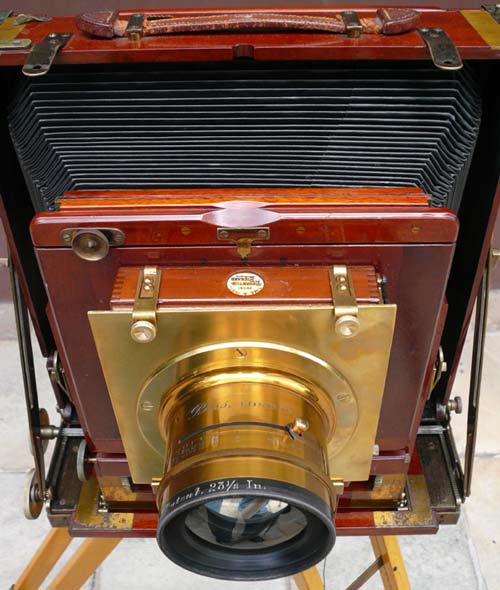
Another highlight of Linhof is the film/plate holder. This type, like the photo below, allows you not only to load films but also glass plates. This is great for those who make their own silver gelatin. From 1mm to something close to 2mm thick this film/plate holder accepts glass plates well.
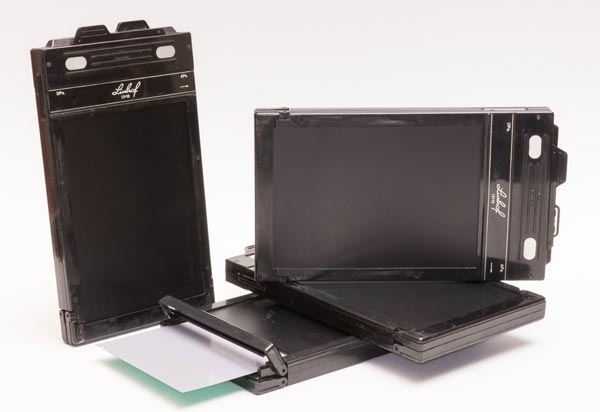
In a brochure about the company’s history, we see the motto that guided them: precision and ruggedness. For this, the factory designed and manufactured not only the cameras but also the tooling that would produce the cameras. The tolerance was set at less than 1/100 millimeters and to guarantee this standard the temperature inside the factory was kept constant to ensure instrument calibration. All this effort has meant that even today it is a pleasure to use these devices that really embody the Linhof principle: precision and ruggedness.
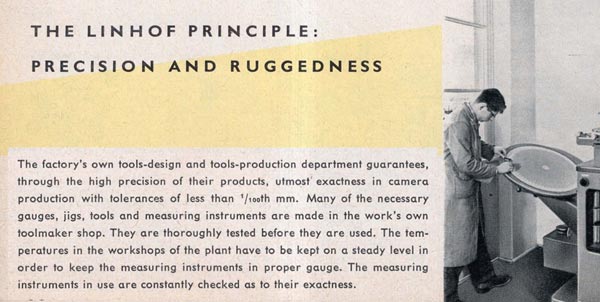
Wagner,
Terrific website. Very informative. Where, if I might ask, did you find a 4×5 reducing back for your Linhof Tech III 5×7 camera? I have the same camera and love it, but I’ve never been able to find a 4×5 back for it. Do you know if the 5×7 to 4×5 back made for the Tech IV would work on a Tech III?
Thank you again for a wonderful website.
Best regards
Ben Calwell
Charleston, W.Va.
Hello, I bought this reducing back almost 20 years ago on ebay. Out of curiosity I just checked it right now and in fact there are some currently on sale. About compatibility I can’t be 100% sure but I think it would work because I have a Technika V 4×5 and the back is interchangeable with this one that came with the 5×7 to 4×5 adapter. I think once they started with this revolving back design Linhof kept it the same for later models.